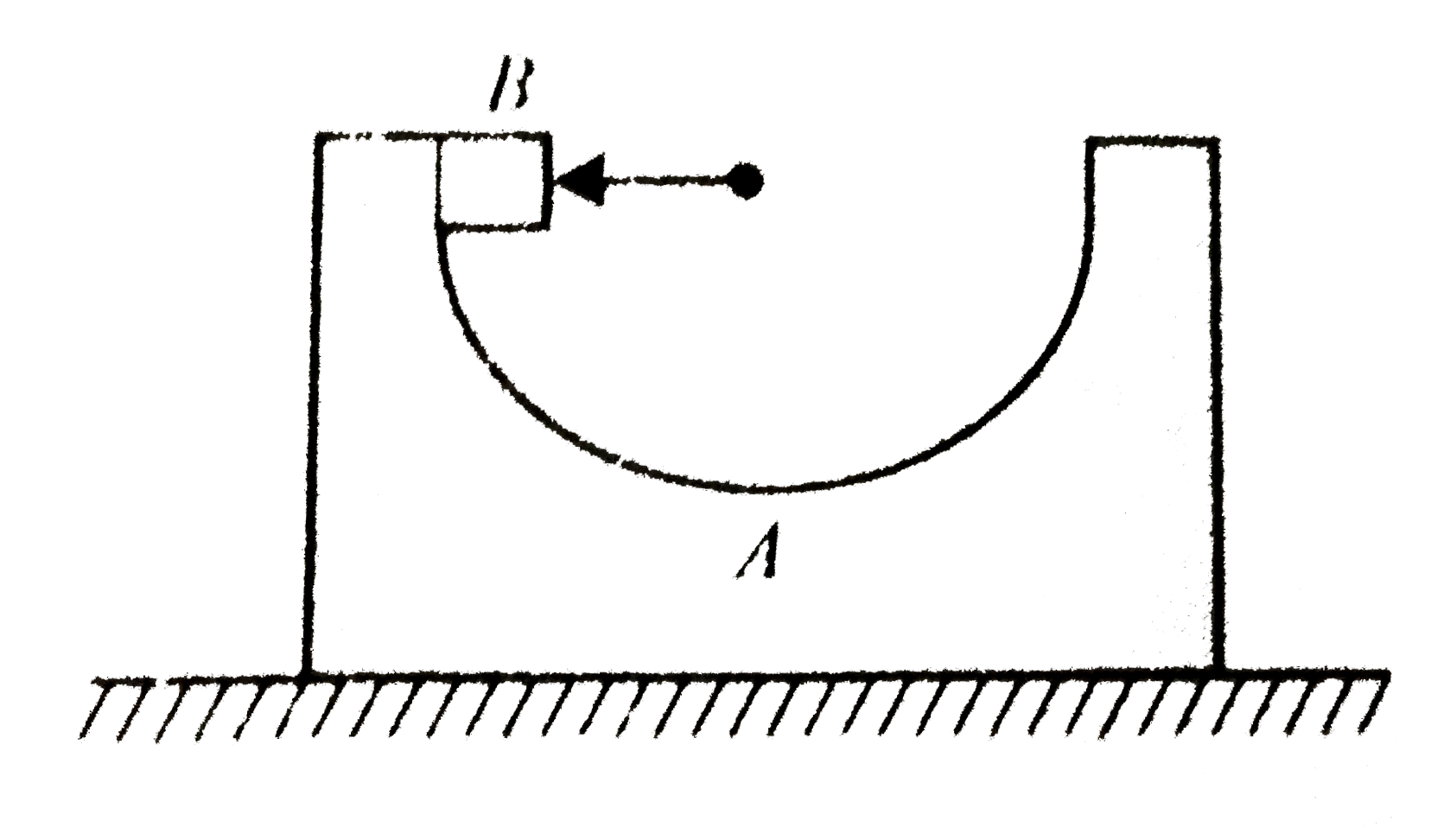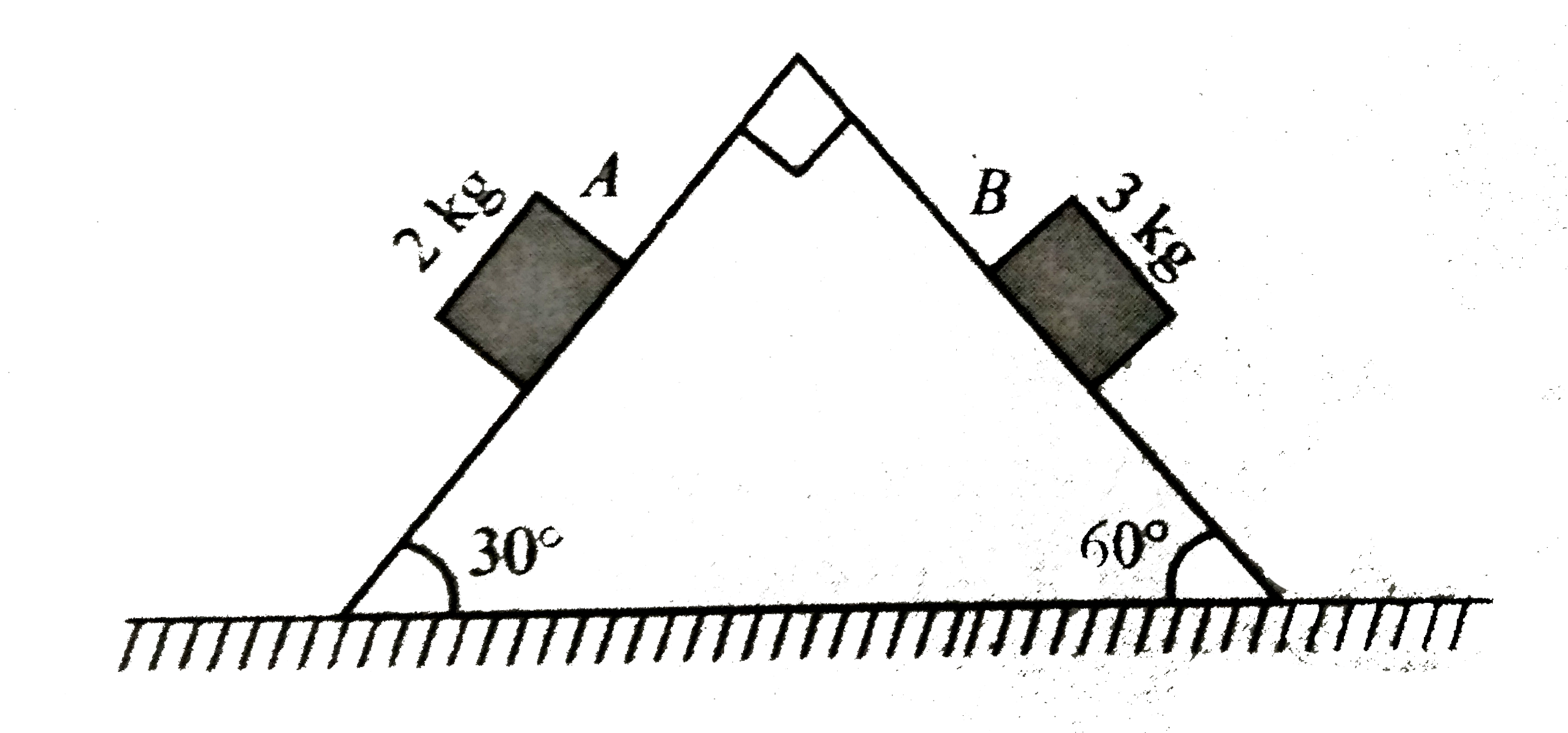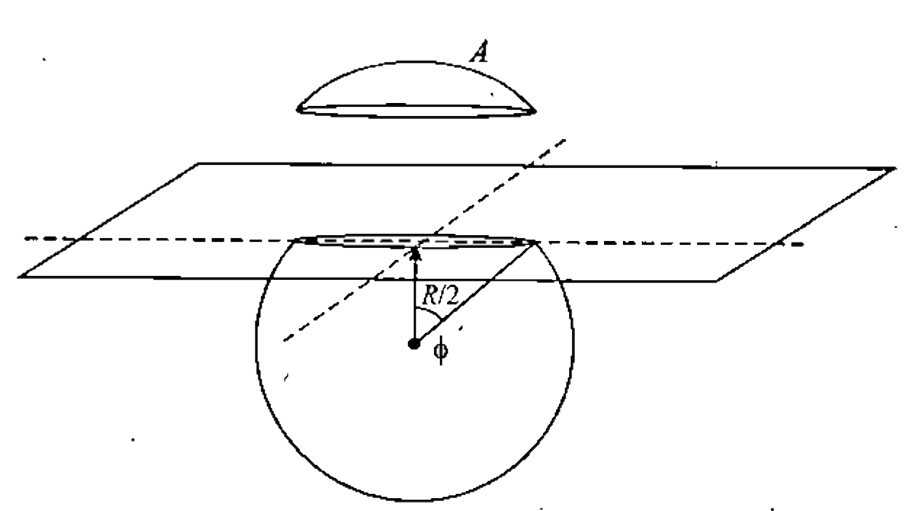Illustrative Example from GK PUBLICATIONS PHYSICS Chapter 4 LINEAR MOMENTUM & ITS CONSERVATION for Class 11
| Class 11 | PHYSICS |
| Chapter | LINEAR MOMENTUM & ITS CONSERVATION |
| GK PUBLICATIONS PHYSICS | Illustrative Example |
| Medium | English |
| Academic Year | 2023-2024 |
Question 2
Two children A and B of same mass (including their caps) M are sitting On a see-saw as shown in Fig. Initially, the beam is horizontal. At once, child B throws away his cap (mass M25) which falls at point Q, midpoint of the left half of the beam, due to this the balance of beam is disturbed. To balance it again what is the mass in required to be put at point P on the right half of the beam?
 View Solution
View SolutionQuestion 7
Let there are three equal masses situated at the vertices of an equilateral triangle, as shown in Fig. Now particle A starts with a velocity v1 towards line AB, particle B starts with the velocity v2, towards line BC and particle C starts with velocity v3 towards line CA. Find the displacement of the centre of mass of the three particles A,B and C after time t. What would it be if v1=v2=v3?
 View Solution
View SolutionQuestion 10
Find out the centre of mass of a composite object shown in figure-4.28. Object consists of a cone with its base joint with the base of a hemisphere. The dimensions of the object are shown in figure. Assume uniform density of the system, find the centre of mass of this system.
 View Solution
View SolutionQuestion 11
A table has a heavy circular top of radius 1 m and mass 20 kg. It has four light legs of lengths 1 m fixed symmetrically on its circumference. (a) What is the maximum mass that may be placed any where on this table without toppling the table ? (b) What is the area of the table tope over which any weight may be placed without toppling it ?View SolutionQuestion 14
A plank of mass M and length L is at rest on a frictionless floor. At one end of it a child of mass m is standing as shown in figure-4.41. If child walks towards the other end, find the distance, which the plank moves (a) till the child reaches the centre of the plank, (b) till the child reaches the other end of the plank.View SolutionQuestion 15
Figure shows a flat car of mass M on a frictionless road. A small massless wedge is fitted on it as shown. A small ball of mass m is released from the top of the wedge, it slides over it and falls in the hole at distance l from the initial position of the ball. Find the distance the flat car moves till the ball gets into the hole.
 View Solution
View SolutionQuestion 16
A man of mass M jumps from an aeroplane as shown in figure-4.43. He sees the hard ground below him and a lake at a distance d from the point directly below him. He immediately put off his jacket (mass=m) and throws it in a direction directly away from the lake. If he just fail to strike the ground, find distance he should walk know to pick his jacket. (Neglect air resistance and take the velocity of man at the time of jump with respect to earth is zero.)
 View Solution
View SolutionQuestion 20
Two trucks of mass M each are moving in opposite direction on adjacent parallel tracks with same velocity u. One is carrying potatoes and other is carrying onions, a bag of potatoes has a mass m1 and a bag of onions has a mass m2 (included i the mass of truck M). When trucks get close to each other while passing the drivers exchange a bag with the other one by throwing the other one. Find the final velocities of the trucks after exchange of the bags.
 View Solution
View SolutionQuestion 21
Figure shows two blocks of masses 5kg and 2kg placed on a frictionless surface and connected with a spring. An external kick gives a velocity of 14m/s to the heavier block in the direction of lighter one. Deduce (a) velocity gained by the centre of mass and (b) the separate velocities of the two blocks in the centre of mass coordinates just after the kick.
 View Solution
View SolutionQuestion 22
Two bars of masses m1 and m2 connected by a weightless spring of stiffness ϰ (figure) rest on a smooth horizontal plane.

Bar 2 is shifted a small distance x to the left and then released. Find the velocity of the centre of inertia of the system after bar 1 breaks off the wall. View SolutionQuestion 23
A block of mass m is connected to another block of mass M by a massless spring of spring constant k. the blocks are kept of a smooth horizontal plane and are at rest. The spring is unstretched when a constant force F starts acting on the block of mass M of pull it. Find the maximum extension of the spring
 View Solution
View SolutionQuestion 24
A shell is fixed from a cannon with a speed of 100m/s at an angle 60∘ with the horizontal (positive x-direction). At the highest point of its trajectory, the shell explodes into two equal fragments. One of the fragments moves along the negative x-direction with a speed of 50m/s. What is the speed of the other fragment at the time of explosion.View SolutionQuestion 25
A shell is fired from a cannon with a speed of 100m/s at an angle 30∘with the vertical (y-direction). At the highest point of its trajectory, the shell explodes into two fragments of masses in the ratio 1:2. The lighter fragment moves vertically upwards with an initial speed of 200m/s. What is the speed of the heavier fragment at the time of explosion? View SolutionQuestion 29
A tank-car of mass M is at rest on a road. At t=0, a force F starts acting on the tank-car also the rain fall starts, in vertical direction, as shown in figure-4.57. The rain is falling with a velocity vr with respect to earth and the rate of collection of water in the tank is rkg/s. find the velocity of the tank-car as a function of time t.View SolutionQuestion 30
A cart loaded with sand moves along a horizontal floor due to a constant force F coinciding in direction with cart's velocity vector. In the process, the sand spills through a hole in the bottom with a constant rate μkg/s. Find the acceleration and velocity of the cart at the moment t, if at the initial moment t=0 the cart with loaded sand had mass m0 and its velocity was equal to zero. Friction is to be neglected.View SolutionQuestion 31
A beam of gas molecules is incident normally on a plate AB. Each gas molecule has mass m and velocity V. The incident beam falls on an area A on the plate and all the molecule strike the plate elastically. Number of molecules in unit volume of the beam is n. When the plate is moved to right (see fig.) a force F1 is needed to keep it moving with constant velocity u (>V) . When the plate is moved to left with constant velocity u, an external force F2 is needed. Find F2–F1.
 View Solution
View SolutionQuestion 35
Two balls marked 1 and 2 of the same mass m and a third ball marked 3 of mass M are arranged over a smooth horizontal surface as shown in the figure. Ball 1 moves with a velocity v1 towards ball 2. All collisions are assumed to be elastic. If M<m, the number of collisions between the balls will be.
 View Solution
View SolutionQuestion 36
Two balls approaching each other along two perpendicular directions and collide at the intersection. After the collision, they stick together. If one ball has a mass of 14.5 kg and an initial speed of 11.5m/s and the other has a mass of 17.5 kg and an initial speed of 15.5m/s, what will be their speed and direction immediately after impact ?View SolutionQuestion 38
A wedge mass m rest on horizontal surface. The inclination of the wedge is α. A ball of mass m moving horizontal with speed u hits the inclined face of the wedge inelastically and after hitting slides up the inclined face of the wedge. Find the velocity of the wedge just after collision. Neglect any friction.
 View Solution
View SolutionQuestion 40
A mass M=1 kg lies on a smooth horizontal base of a rough inclined plane at an angle 37∘ with the horizontal as shown in figure-4.81. A bullet of mass m=0.1 kg is fired horizontally with a velocity u=110m/s and gets embeded in it almost immediately. The impluse imparted carries the combined mass up the incline and finally lands on the horizontal level with the horizontal base.

If the length of the incline is I=1.8 m and the incline offers a coefficient of kinetic friction 0.5 to the sliding of the mass, find the horizontal distance from the base of the incline to the point of landing of the combined mass. Assume the contact of the incline with the horizontal plane is smooth and mass is not jerked when starts up on incline plane.View SolutionQuestion 41
A bead can slide on a smooth straight wire and a particle of mass m attached to the bead by a light string of length L. The particle is held in contact with the wire and with the string taut and is then let fall. If the bead has mass 2m then when the string makes an angle θ with the wire, the bead will have slipped a distance.
 View Solution
View SolutionQuestion 42
Figure shows a block A of mass 6m having a smooth semicircular groove of radius a placed on a smooth horizontal surface. A block B of mass m is released from a position in groove where its radius is horizontal. Find the speed of the bigger block when the smaller block reaches its bottom most position.
 View Solution
View Solution








